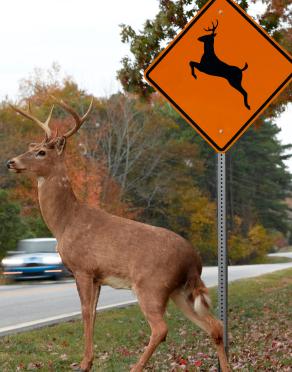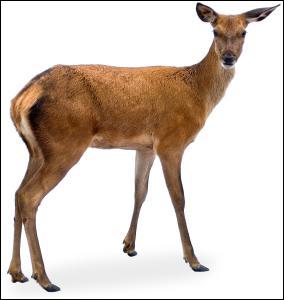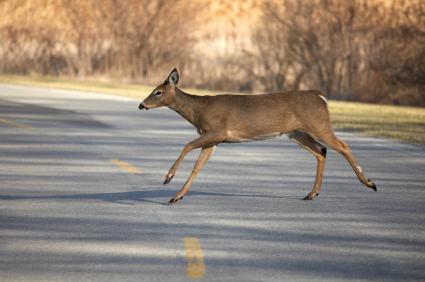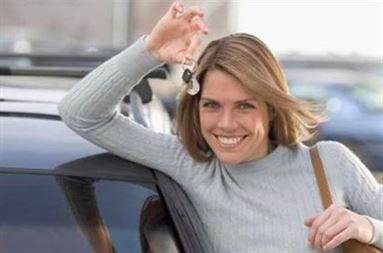 When deer and vehicles collide the results can be fatal and not just for the deer. Even trying to avoid hitting one can result in an accident if not handled correctly.
When deer and vehicles collide the results can be fatal and not just for the deer. Even trying to avoid hitting one can result in an accident if not handled correctly.
A mature buck can weigh 200 pounds or more and cause major damage and injuries, but so could hitting a tree or rolling a car while trying to steer clear of an encounter.
Deer collisions can happen any time of year but spike tremendously during the fall mating season when bucks have just one thing on their minds—and it’s not looking out for traffic.
There are more than 1.6 million deer and vehicle collisions in the U.S. each year resulting in around 200 fatalities, tens of thousands of injuries and billions in vehicle damage and related injuries, according to the Insurance Information Institute.
Collision vs. comprehensive
When it comes to filing an insurance claim, many drivers could be surprised to discover that deer collisions are not covered under a collision policy. All drivers are required to carry liability insurance, which covers damage to other vehicles or people, but collision and comprehensive insurance are both optional.
Jeanne Salvatore, senior vice president and consumer spokesperson for the I.I.I. says damage from hitting an animal falls under a comprehensive insurance policy. It also covers almost anything that could go wrong with a vehicle apart from an actual collision, such as fire, theft, vandalism or falling trees.
 Hitting a tree would fall under a driver’s collision coverage if they have it, Salvatore says.
Hitting a tree would fall under a driver’s collision coverage if they have it, Salvatore says.
In deciding what coverage to get, Salvatore says drivers should consider whether it’s cost-effective for them. Someone financing a new car would likely be required to have comprehensive coverage.
“Quite frankly if you have an old car it might not be cost-effective to buy comprehensive and collision coverage. You have to look at what is the cost of the car and the cost of the insurance and then make a decision in terms of what would make sense for you,” Salvatore says. “Look at how much you’re paying in insurance versus how much you’d get back if you had a total loss, taking into account the deductible.”
Mating season
Tom Lichfield, state deer biologist with the Iowa Department of Natural Resources, says at least a third of all deer-vehicle collisions in Iowa take place between October and November each year and coincide with mating season, when deer are on the move.
“The bulk of these collisions are happening over a much more concentrated time period than what people might think and so it pays to consciously look for dear from about mid-October through the end of November,” Litchfield says. “If you want to hold it down even narrower than that, then from about the last week of October and the first two or three weeks of November it pays to be looking.”
 Lichfield says deer of some variety inhabit every state in the continental U.S., plus Alaska.
Lichfield says deer of some variety inhabit every state in the continental U.S., plus Alaska.
In colder regions, the Midwest and northern states, the deer mating season or “rut” gets under way in late October, peaks in early November and runs its course by the third week of the month.
The rut happens later in warmer areas. In the southern part of Texas, for example, mating season takes place in January.
The deer mating ritual involves a chase strategy where bucks run after does with little regard for anything else. They’re not going to show much caution in crossing a road, they’re likely to be in unfamiliar territory and probably won’t be alone.
“If you see one deer you should be thinking that there should be more around because during the rut, if it’s a doe blasting across the highway then there’s a high likelihood that a buck is going to be following her,” Litchfield says. “You’ll often see multiple bucks chasing a doe. They’re not getting along with each other, they’re in a race with each other and they’re not paying attention.”
Another problem is deer are harder to spot at that time of year. Their coats turn to gray starting in early September, which allows them to blend in better with the fall landscape. They change back to a reddish color at the end of March through April.
Outside of mating season, does raise their young together while bucks run around as a group, so any time there’s a deer alongside the road or crossing it they’re probably not alone.
Deer are also most active and on the move during sunrise and sunset. When these time periods line up with high travel times, such as during the fall rush hour, the chance of an accident is high.
Deer whistles don’t work
The idea behind deer whistles is they supposedly emit sounds at frequencies that deer can hear but humans can’t. In reality, Litchfield says multiple studies indicate they simply don’t work.
Instead of relying on them it’s important to know what to watch out for and how to act if an encounter happens.
Lichfield says deer are very adaptable and can live just about anywhere there’s enough cover for them to hide in, such as tall grass, brush or a mixture of woodland and open ground. Corn crops offer a food supply at various stages of growth and can provide cover when tall enough.
 Along highways deer are more likely to cross wherever there’s vegetation near the road, as it provides cover.
Along highways deer are more likely to cross wherever there’s vegetation near the road, as it provides cover.
Litchfield says dips or peaks in the terrain could also be prone to deer crossings. He says some deer seem to understand the road is a hazard, but not all of them.
Of course, deer crossing signs offer a pretty obvious clue that drivers should be alert but people can become complacent if they frequent an area with warning signs but fail to see any deer.
“Many people don’t use those signs much but we wish they would, they are put there for a good reason,” says Dr. Bill Van Tassel, manager of AAA’s driver training programs. “Somebody has identified that as a high likelihood place of animal presence so use those signs.”
Van Tassel says the first step in avoiding a collision is to stay clear of areas where deer crossings occur, especially at times when deer are known to be on the hoof.
If that’s not possible, Van Tassel suggests driving as if an animal is likely to jump out into the roadway at any time. This means slowing down to a speed where it would be possible to make a quick stop.
“As your speed goes up your braking distance increases exponentially. If you move from 20 mph to 40 mph it’s like four times the distance,” Van Tassel says. “Each mile an hour that you’re going faster than you normally would, it’s less likely you’ll be able to stop in time.”
How to react
Litchfield says looking out for deer means more than just watching the road ahead. He says drivers should look to the sides and continuously scan back and forth. Deer approaching the roadway are the ones drivers are more likely to miss with their eyes and wind up hitting with their cars.
If following another car on the highway, drivers can use the other car’s headlights to watch the sides of the road ahead. Litchfield says using high beams if there’s no other traffic is a good idea, but if a deer is spotted drivers should drop to their low beams and start braking immediately. The old adage about “a deer in the headlights” freezing in place is true.
“One of the things that seems to baffle any deer is when it’s about dark or pitch dark and they get hit by bright lights, that seems to disorient them,” Litchfield says. “When I spot a deer I tend to drop down to low beams just to give the deer a chance to see too.”
 How drivers should react to an encounter depends in part on the their location. On a wide-open road with several lanes and a shoulder, Van Tassel says drivers should brake aggressively and might be able to use the full width of the road to steer around the deer.
How drivers should react to an encounter depends in part on the their location. On a wide-open road with several lanes and a shoulder, Van Tassel says drivers should brake aggressively and might be able to use the full width of the road to steer around the deer.
A narrow two-lane road without shoulders is much riskier, as it gives little room to maneuver and it’s less likely to have a paved shoulder. There’s much less room to maneuver and a driver could wind up leaving the roadway.
In this case, Van Tassel recommends hitting the brakes and keeping the steering wheel straight. He says drivers would be much better off hitting a deer head-on than risk hitting a fixed object, such as tree.
It’s also preferable to a rollover or a side impact, as most of a car’s safety systems are designed for a front-end collision. Van Tassel says it takes advanced training to successfully make aggressive moves at highway speed because people have a tendency to oversteer.
“You could far more easily find yourself driving into a ditch, into a tree or perhaps worst of all rolling the car over and that’s not all that uncommon when we see abrupt aggressive steering on narrow roads, there’s just not enough pavement there side-to-side to allow drivers to do that,” Van Tassel says.
Litchfield does not recommend hitting the horn when there’s deer along the road, as it could startle them and cause an accident. He says deer are attracted to road right-of-ways as a source of food, particularly in the spring when they’re the first areas to turn green.
The only time he recommends using the horn would be giving a short beep if there’s a deer standing in the road and the driver has already slowed down.
Litchfield says he once hit a deer while driving near an open woodland area. A doe crossed the road in front of him and he looked to see if there were others following behind but didn’t see any, so he turned his gaze back to the doe.
“I was slowing down the whole time, so I turned to look at the deer because I like deer. I was looking at her and when my eyes came back to the roadway there was a deer trying as hard as it could to run in front of me,” Litchfield says. “If I was just looking at the road I could’ve easily seen that deer coming and stopped and not hit it.”












